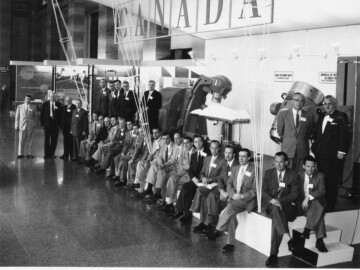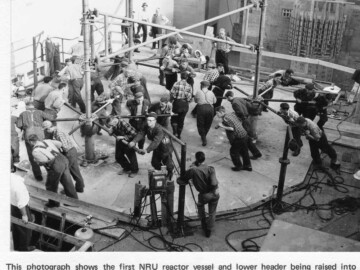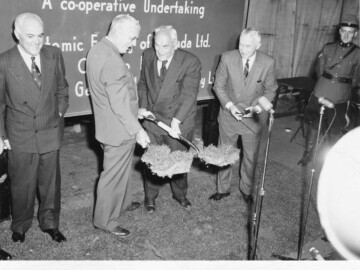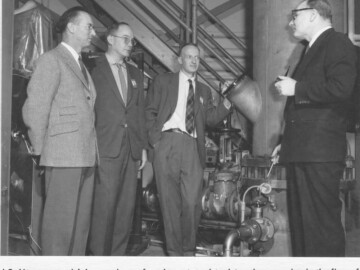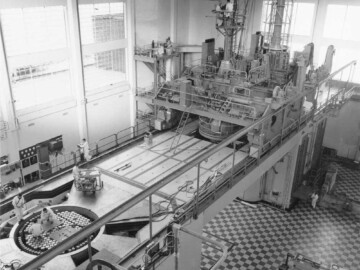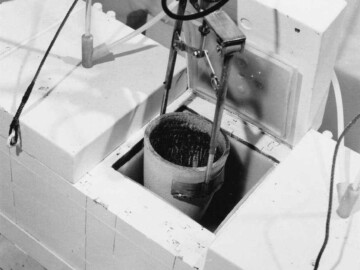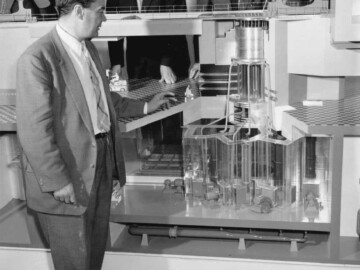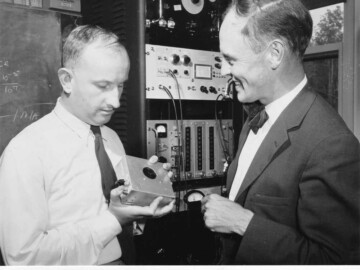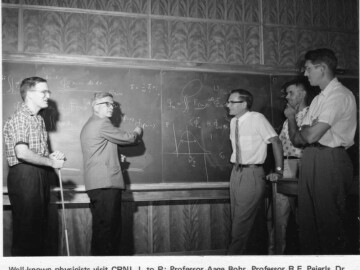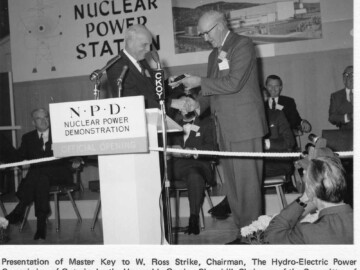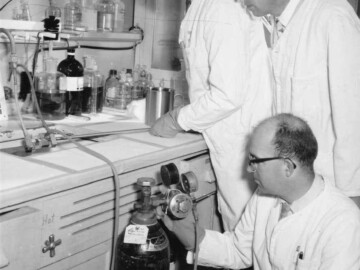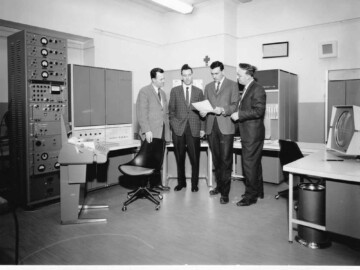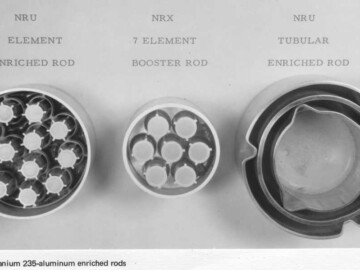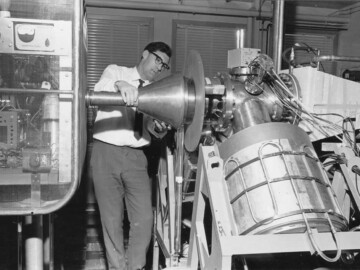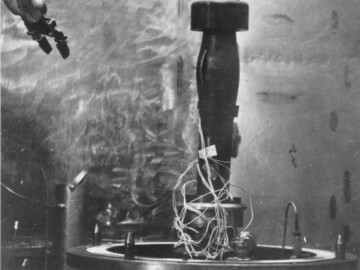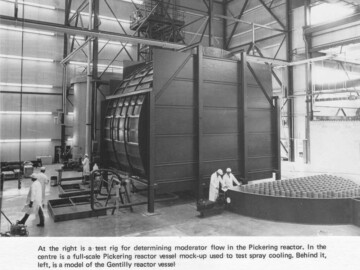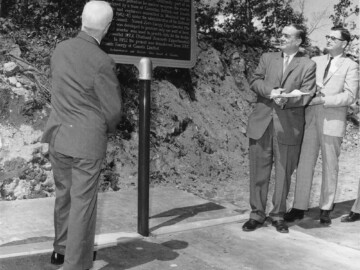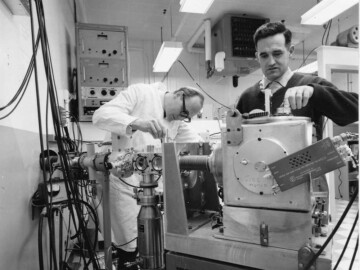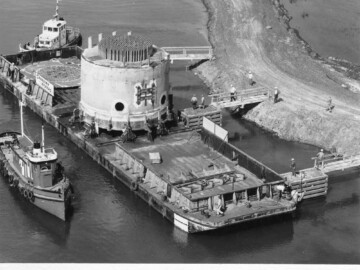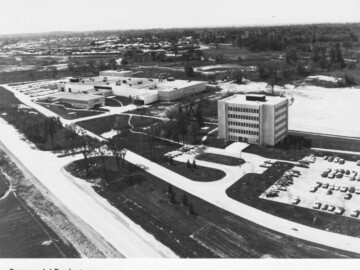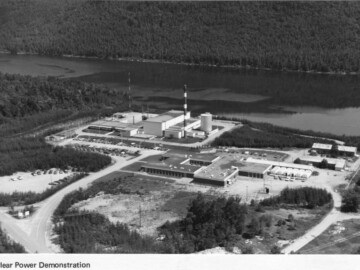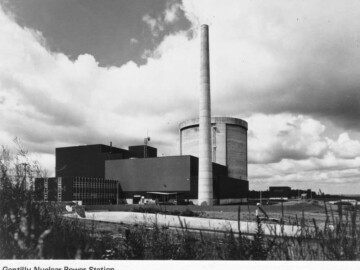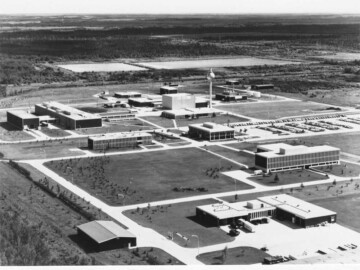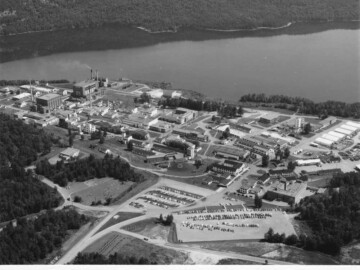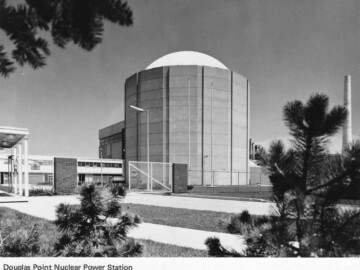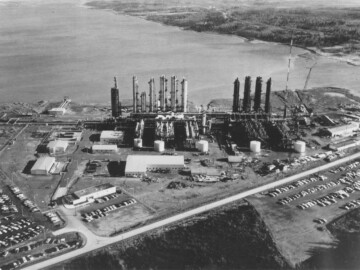W.B. Lewis Collection
Dr. Lewis dominated the development of nuclear power in Canada.
Dr. Wilfred Bennett Lewis (generally referred to as W.B. Lewis or simply W.B.) arrived in Canada in 1946 when he replaced John Cockcroft as Director of the Chalk River laboratories.
For most of the next three decades he dominated nuclear research and the development of nuclear power in Canada. The outstanding success of the CANDU reactor program, which he led, was his most stunning achievement. Dr. Lewis retired from AECL in September of 1973 and was presented with a book of photographs of important events during his tenure. The following photographs are taken from this collection.
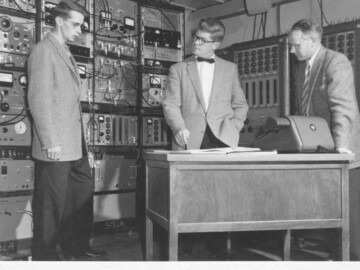
Three very prominent CRNL physicists. Photo ~1953 in control room of 3 MV machine. Kuehner went on to lead a lab at McMaster while Bromley (who grew up in the Ottawa Valley) later led a lab at Yale University and served as Scientific Advisor to the President of the USA. Almqvist, who played a key role the development of research accelerators at CRNL unfortunately passed away prematurely after a long illness in 1965. Photo source - AECL
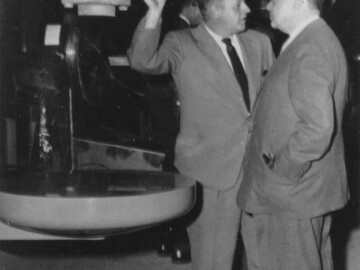
With one of the Theratron Jr., Co-60, teletherapy units manufactured at Commercial Products Division in Ottawa. Photo source - AECL
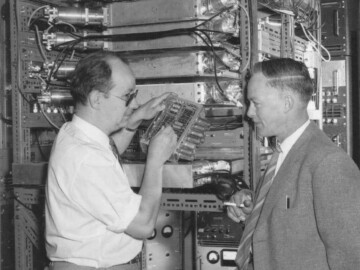
Photo early 1960s AECL’s interest in cosmic rays stemmed from the desire to predict magnetic storms from solar flares and also to determine the neutron production rate from high-energy protons striking heavy metals. Photo source - AECL
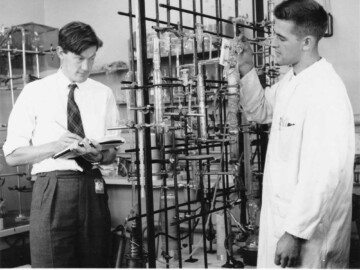
Dr. P.J. Dyne investing the effects of radiation on organic compounds (Dr. Dyne and W.J. Fletcher). Photo source - AECL
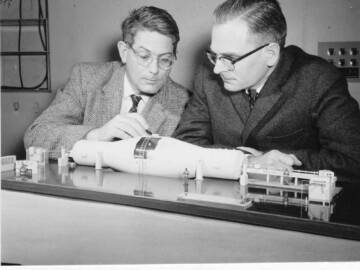
Both the MP tandem and the EN that preceded it were the first of their model installed in the world. Photo 1968. Photo source - AECL
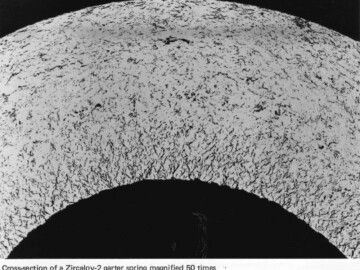
Garter springs are used in CANDU reactors to maintain the pressure-tube calandria-tube spacing. Photo source - AECL
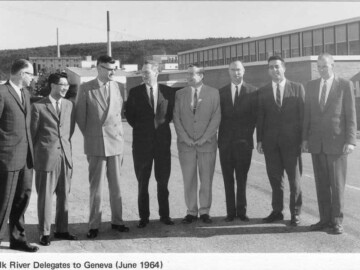
L-R : L-R, T. Church, G. Pon, W.M. Campbell, L. Haywood, WB Lewis, D. Hurst, A. Mooradian, G. James Photo source - AECL
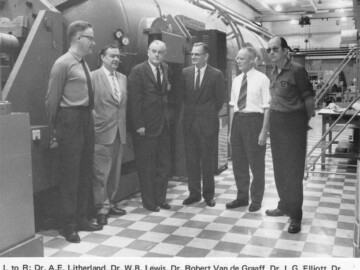
In front of EN Tandem accelerator with the inventor/designer of the Tandem series – R. Van de Graaff. Photo source - AECL
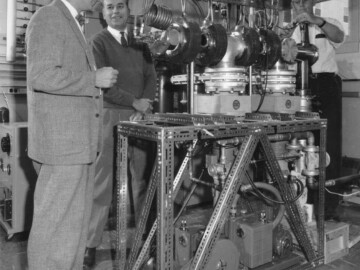
Early studies leading to dc proton ion sources for the Intense Neutron Generator. (1965) Photo source - AECL
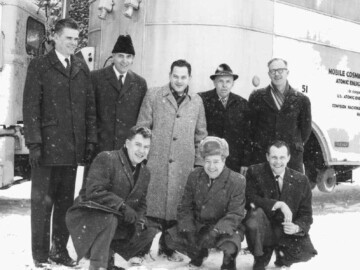
This experiment was operated at Echo Lake site in Colorado USA (1955-1956) to measure the spallation neutron yield from 250-900 MeV cosmic-ray protons on heavy elements such as lead and uranium. The higher altitude site had a flux of cosmic rays about 11 times greater than at Chalk River. Photo source - AECL

